Aquarium Light VS Grow Light
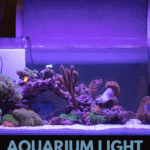
In this article, we take a closer look at aquarium light vs grow calorie-free. If you're into hydroponics and indoor gardening, yous'll desire to know if yous can utilize regular LED aquarium lighting to grow your plants, or do you lot need a special horticultural grow light? Also, is it more than price-effective to use an aquarium plant light for your fish tank set upward if you have live plants and fish, rather than a regular tank light?
Read this guide to discover out!
Aquarium Lights vs Grow Lights – Comparing Table
Here's a quick summary of what kind of lighting tin be used for aquarium lights vs grow lights, as well as the measurement applicable to both.
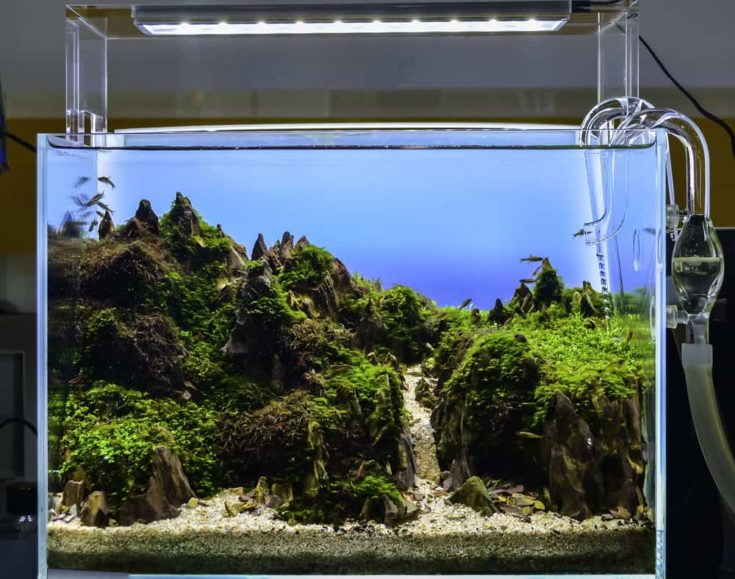
Yeah, if for planted tanks
Normal Output Fluorescent Lighting
T5 High Output (HO) fluorescent tubes
Loftier-Intensity Discharge (HID) Lights
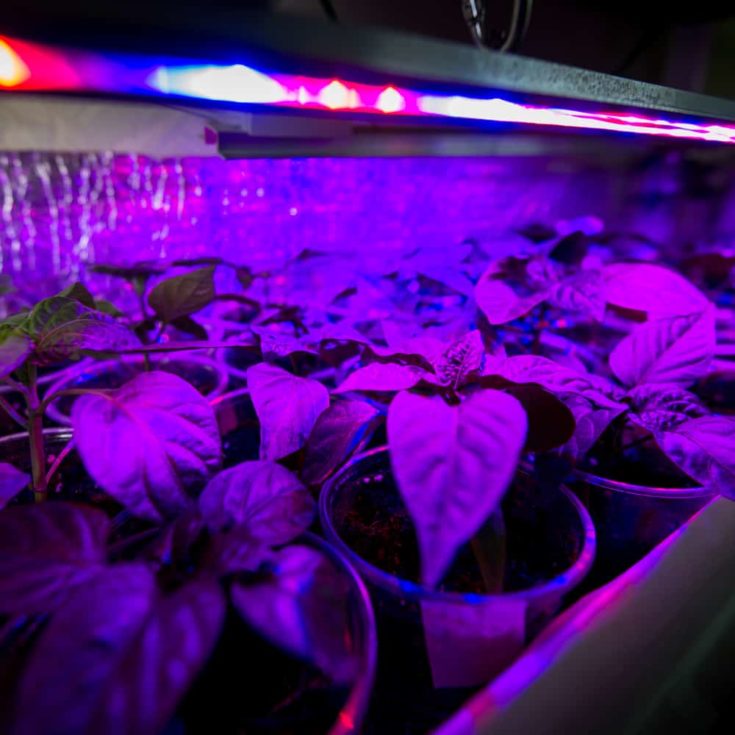
Normal Output Fluorescent Lighting
T5 High Output (HO) fluorescent tubes
High-Intensity Belch (HID) Lights
Aquarium Lights vs Grow Lights
What's the difference between a grow light and an aquarium lite?
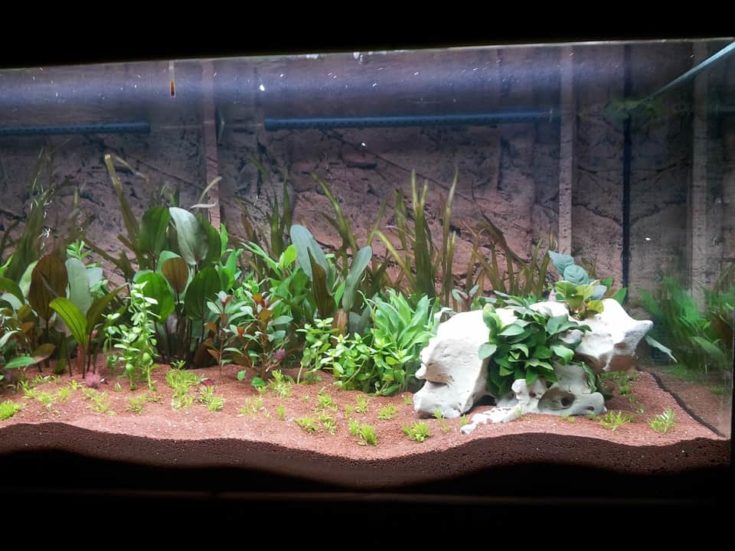
The difference between a plant grow low-cal for growing terrestrial plants, and an aquarium calorie-free is by and large the unit's spectral output. Aquarium lights usually have more green and less red and blue, which gives the light they produce a more appealing look, although it'southward not ideal for plants, which demand more red and blueish light for salubrious growth.
Kelvin rating
The principal difference between aquarium and grow lights is in the Kelvin rating. And then, what is the Kelvin rating?
In science, Kelvin is defined as:
"… the SI base unit of thermodynamic temperature, equal in magnitude to the degree Celsius."
In plain English, Kelvin is used in lighting to mensurate the color temperature of a light seedling. Basically, the higher the Kelvin rating (k) of a light bulb, the whiter the low-cal produced past that bulb will be.
Grow lights and lights specifically designed for use in tanks containing aquatic plants are mostly given a Kelvin rating of between 4,700k to around half dozen,700k and emit a pinkish-white lite, which is the optimum range for photosynthesis and pretty much equates to natural daylight.
Aquarium lights for reef and marine tanks are generally more than toward the eight,000k range and to a higher place, producing a bright white through to blue spectrum.
Terrestrial Plants
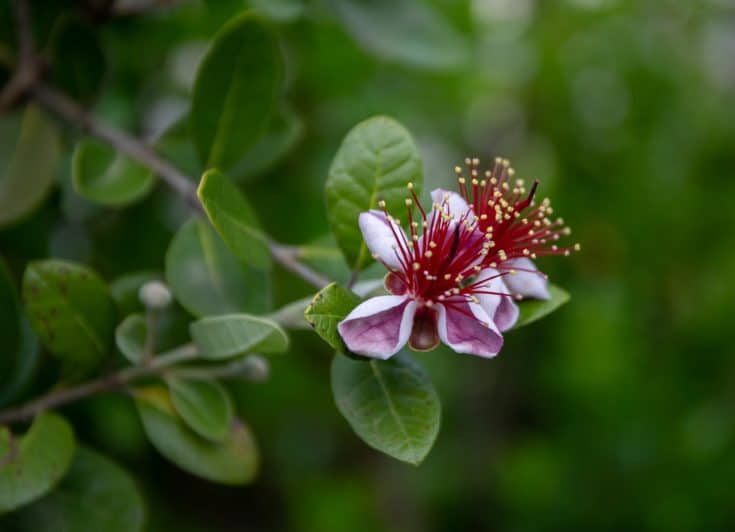
The spectral output defines lights that are designed for growing terrestrial plants. Found lights generally take a lot of reds and blues, which are most constructive for the process of photosynthesis.
Aquarium Lights
So, to summarize, aquarium lights produce a bright white through to blue light that's designed to evidence off your fishes' colors, also as provide adequate lighting for piece of cake to intendance for aquatic plants. More challenging constitute species need more red and blue calorie-free to thrive.
Planted Tanks
Many aquatic plants that are pop with hobbyists are very piece of cake to keep and grow. Yet, you'll need to ensure that the plants receive acceptable light if they're to remain salubrious and thrive.
By and large, carpet plants, those that are depression-growing, and those with red or majestic coloration require higher calorie-free levels than other species, which can present a claiming, specially if you have a deep tank that houses light-sensitive fish or other creatures.
Paludariums
If y'all keep a paludarium, y'all'll need to choose lighting that suits both the creatures that live below the water and the plants that dwell above it. One fashion to avoid conflict is to employ plastic or silk planting, which can expect equally effective without giving you the headache of finding lighting that suits both environments.
Yous might be interested on our commodity about Riparium vs Paludarium. Read most it here.
Lumens and Watts
Lights are also measured in lumens and watts. So, what's the deviation between lumens and watts?
Lumens
Lumens are the measurement of visible light that's given off by a lite source, which you can measure out with a light meter.
Watts
Watts is the measurement of the electricity that a device uses, for example, an aquarium or grow light fitting. Watts refers to how much energy a device uses or its energy consumption and is not related to the corporeality of light a bulb produces.
Watts vs Lumens in Aquarium Lights
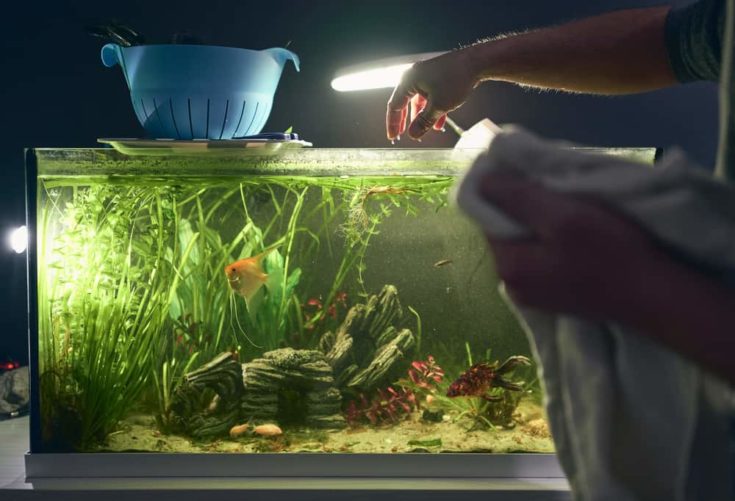
When choosing aquarium lights, the lumen value is ever shown on the packaging. Previously, light bulbs or tubes were classified in watts to reverberate how much electricity the seedling used. That makes it tricky to compare the amount of light a unit will produce because bulbs, LEDs, and fluorescent tubes are not directly comparable in that respect.
The lumen value that yous need for your tank actually depends on whether you lot have alive plants or not. Fish don't need light to be happy; we only illuminate our aquariums and so that we can admire the contents.
Plants, however, demand light for photosynthesis, and without light, your plants volition dice. The amount of light you need depends on the kind of plants you grow. You can read a detailed commodity virtually choosing lighting for aquarium plants in the commodity at this link.
Every bit a basic guideline, 20 lumens correspond to 0.v-watt T5 tube per liter or 40 lumens to 1-watt T5 tube per liter.
What are the Types of Aquarium Lights?
There are several kinds of aquarium lights:
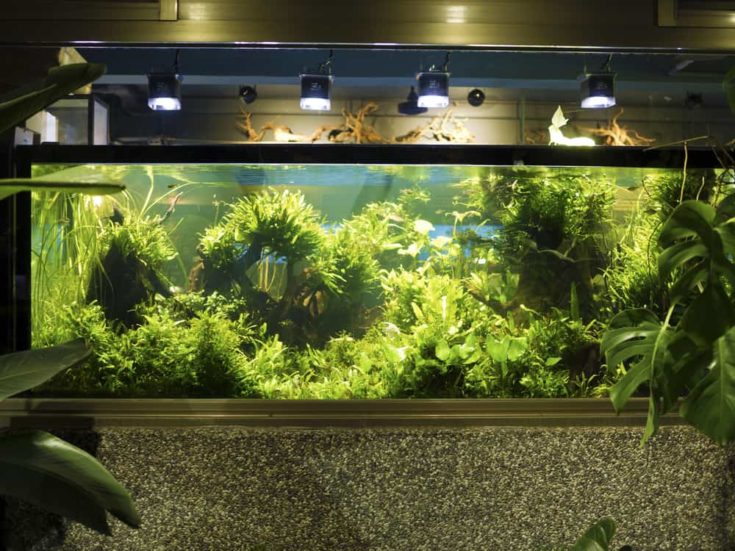
Normal Output Fluorescent Lighting
Normal output fluorescent lights are very versatile lighting systems and are the simplest and near pop way of illuminating your fish tank. There's a huge range of bulbs to choose from to conform your requirements; they're cost-effective and free energy-efficient, enabling you to customize your lighting set up exactly as you want it.
Compact Fluorescents
Meaty fluorescent lights are a higher-output version of normal output fluorescent light systems. Rather than a single tube, compact units feature dual or quad tube bulbs to create much more illumination than you would get from one seedling, essentially giving you more bang for your buck.
Metallic Halides
Advanced hobbyists use metal halide lighting systems. Metal halide systems comprise a primary glass bulb continued to another bulb (arc tube) within information technology. These lights are often used for reef tanks where the inhabitants require high light levels or very big, deep tanks. Metal halides tend to emit high levels of heat and are more expensive to run than other options.
LED (Low-cal Emitting Diode)
LEDs are condign extremely popular in the hobby, equally they apply far less energy to produce very brilliant lighting, offering a feasible culling to metal halides for reef tank lighting. They also have a much cooler operating temperature than other lighting options, keeping your h2o temperature more stable than other lighting systems.
Can Aquarium Lights exist Used as Abound Lights?

Although, in theory, y'all could use sure aquarium lights for growing terrestrial plants, you lot may get amend results by using a brighter, higher spectrum horticultural lighting unit.
Grow Lights
Grow lights are used to provide a similar light spectrum to that of the sun, specifically to heave terrestrial plants' salubrious growth. Grow lights can exist tailored to provide specific spectral ranges, color temperature, and luminous efficacy to suit the species of found and stage of cultivation.
Spectral Output
Equally mentioned previously, when choosing grow lights, it'due south the spectral output that'south most important.
Plants primarily blot blue and crimson light to grow and flower. Blue light stimulates plant growth, while crimson lite encourages growth and flowering.
A correctly balanced spectral output is vital, every bit too much bluish lite and not enough carmine light will produce stunted growth with thick stems, few flowers, and dark green leaves. Too much ruby-red calorie-free provides plants with elongated stems and tall, spindly growth.
Types of Grow Lights
There are several kinds of grow lights that are suitable for terrestrial horticulture.

T5 High Output (HO) fluorescent tubes
T5 HO fluorescent tubes are the most popular choice of grow lights and can also be used for aquarium lighting.
HO fluorescent tubes produce potent low-cal that encourages good growth and flowering, are long-lasting (approximately 22,000 hours), are inexpensive, economic to run, and give off petty heat.
LED (Light Emitting Diode)
LEDs tin be used every bit grow lights and are long-lasting, cool-operating, and more free energy-efficient than T5 HO fluorescents. However, they are more than expensive to buy.
Loftier-Intensity Belch (HID) Lights
HID lights include metallic halide and loftier-pressure sodium systems. Although avant-garde horticulturalists sometimes employ these systems, they give off a lot of estrus and require extraction equipment to remove the hot air.
Can abound lights be used as aquarium lights?
And then, yous can run into that some forms of grow lights can double equally aquarium lights if you lot have a planted tank.
In Determination
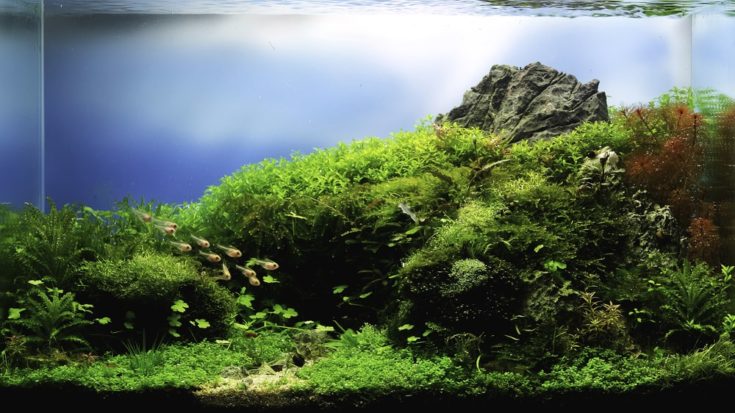
I hope you enjoyed our comparing betwixt aquarium light and grow lights. As y'all can see, at that place is some crossover betwixt the two, although there are some key differences too.
If you keep an aquarium that doesn't have living plants, the intensity and color of the lighting you choose volition depend on the preferences of your fish and other tank residents. Nevertheless, if you lot accept live plants in the tank, you volition demand to cull lighting to suit their needs. To farther complicate matters, if you lot proceed a paludarium, you'll demand lighting to suit your livestock and terrestrial plants.
We'd honey to know how yous manage the challenge of lighting your tank! Share with us in the comments box below.
Source: https://www.tankarium.com/aquarium-light-vs-grow-light/

0 Response to "Aquarium Light VS Grow Light"
Post a Comment